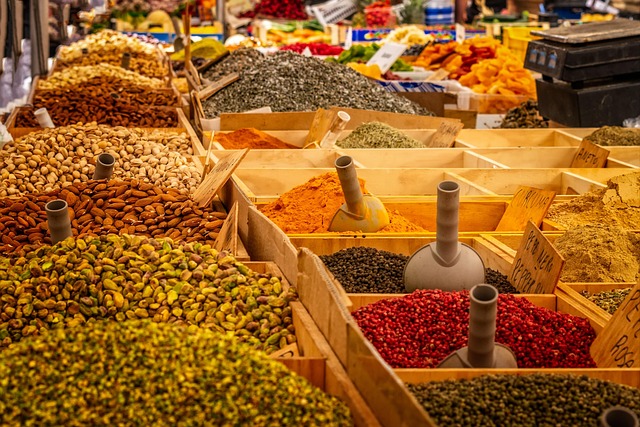Smart Binance Spot Trading Tips & Strategies
Author: Jameson Richman Expert
Published On: 2025-11-10
Prepared by Jameson Richman and our team of experts with over a decade of experience in cryptocurrency and digital asset analysis. Learn more about us.
Binance spot trading tips can help both new and experienced traders improve consistency, reduce risk, and make better trading decisions on one of the world’s largest crypto exchanges. This comprehensive guide covers practical strategies, trade examples, platform setup, security best practices, and tools you should use — with actionable steps you can apply immediately.

Why trade spot on Binance?
Spot trading means buying and selling the actual crypto asset (not derivatives or leverage). Binance is popular for spot trading because of deep liquidity, a wide range of trading pairs, competitive fees, and strong order-book depth. If you don’t yet have an account, consider registering here: Create a Binance account.
For background reading on spot markets, see the Spot market overview on Wikipedia and Investopedia’s piece on spot trading to understand fundamentals and terminology.
Getting started — account, security, and setup
Account setup & KYC
Complete identity verification (KYC) to increase deposit/withdrawal limits and access advanced features. Use a strong, unique password and enable two-factor authentication (2FA) immediately.
Security checklist
- Enable 2FA: Use an authenticator app (Google Authenticator, Authy) rather than SMS when possible.
- Anti-phishing code: Set Binance anti-phishing code to verify official emails.
- Withdrawal whitelist: Restrict withdrawals to your trusted wallet addresses.
- Hardware wallet: For long-term holdings, use a hardware wallet for cold storage.
Charting & analysis tools
Use a robust charting platform to analyze price action. If you need a step-by-step guide on setting up TradingView charts, this is a useful resource: How to set up TradingView charts. Connecting TradingView analysis with Binance spot trading is a best practice for technical traders.
Core Binance spot trading tips (practical, actionable)
Below are practical, proven tips you can apply tonight. They are arranged from basics to intermediate strategies with specific actions and examples.
1. Start with a trading plan
A trading plan is your roadmap. Define:
- Trading goals (income, learning, accumulation)
- Timeframe (scalp, day, swing, position)
- Risk per trade (commonly 0.5–2% of account equity)
- Entry, stop-loss, take-profit rules
Example: If your account is $5,000 and you risk 1% per trade, your maximum loss per trade is $50.
2. Position sizing & risk management
Calculate position size based on distance to stop-loss and allowable risk. Formula:
Position size = (Account balance × Risk %) / (Entry price − Stop-loss price)
Example: Account = $5,000, Risk = 1% ($50). Entry 0.025 BTC (price $40,000 → example using smaller units), stop-loss 5% below entry. Position value = $50 / (0.05) = $1,000. Adjust lot size accordingly.
3. Use limit orders to reduce slippage
Market orders execute at the best available price but can suffer slippage on volatile or low-liquidity pairs. Use limit orders to control fills, especially for entries and exits. For urgent exits during extreme moves, market orders may be required — know the trade-offs.
4. Understand fees and use discounts
Binance fee structure: maker and taker fees that vary with volume and BNB balance. Holding BNB often reduces fees. Review Binance’s fee tiers and optimize trading frequency and size to minimize costs. Higher frequency traders should monitor fee impact on profitability.
5. Trade liquid pairs and watch the spread
Higher liquidity reduces slippage and makes limit orders more likely to fill. Stick to major pairs (BTC, ETH pairs) or top altcoins for smaller accounts. For discovering promising altcoins, check this altcoins guide: Top 10 altcoins to buy — practical guide.
6. Apply technical analysis, not guesswork
Rely on price action: support & resistance, trendlines, moving averages, RSI, MACD, and volume. Combine indicators with price structure. For chart setups, use the TradingView guide above to configure indicators correctly.
7. Use stop-loss and avoid emotional removal
Set a stop-loss every trade. If you feel tempted to move it after the trade starts losing, that’s likely emotional trading. Predefine rules for adjusting stops, e.g., move stop to breakeven only after price achieves certain profit milestones.
8. Have clear exit rules — partial take profits
Plan exits: full target, multiple partial targets, or trailing stops. Partial profit-taking locks in gains and reduces risk.

Technical strategies for spot traders
Below are common tactical approaches for spot traders, with actionable ways to implement them.
Trend-following strategy
- Use a 20 EMA and 50 EMA on a daily or 4-hour chart.
- Look for EMA cross confirming trend direction (20 EMA > 50 EMA → bullish).
- Enter pullbacks to support or the 20 EMA with confirmation (bullish candle or RSI > 40).
- Place stop-loss below the recent swing low. Target 1.5–3× the risk.
Mean-reversion / range trading
In a range market, buy at support and sell at resistance with tight stops. Use RSI and Bollinger Bands to identify extremes. Avoid range trading during major news events that create breakouts.
Breakout and retest
Breakouts can be traded after a confirmed retest:
- Wait for price to break a clear horizontal resistance with volume.
- Wait for pullback to retest that level (it should act as support).
- Enter when the retest holds with bullish confirmation (e.g., bullish engulfing bar).
Using volume & order flow
Volume confirms move strength. A breakout on low volume is more likely to fail. For advanced traders, monitor order book depth and large buy/sell walls on Binance order book to sense institutional flows.
Concrete trade example (step-by-step)
Example scenario: You trade ETH/USDT on spot using a swing setup.
- Account size: $10,000. Risk per trade: 1% ($100).
- Chart: 4-hour timeframe. Entry: $3,200 after a bullish retest. Stop-loss: $3,040 (5% below entry).
- Distance to stop = $160 → Position size = $100 / $160 = 0.625 units of the base asset value in USD terms. Convert to actual ETH amount as needed.
- Set a primary take-profit at $3,520 (10% target), secondary at $3,840 (20% target) to take partial profits.
- Use limit order for entry at $3,200 with 25% of position to scale in, rest to average if trend confirms.
This plan outlines risk, entry, stop-loss and staggered exits. Follow the plan without emotional changes unless you have predefined rules for adjustments.
Advanced Binance spot tips
1. Use BNB to pay fees
Enable BNB fee discount to reduce trading costs. Small ongoing savings compound over time for active traders.
2. Use Binance’s VIP and referral features strategically
If you have high volumes, VIP tiers reduce fees. Also, if you want to try other exchanges to arbitrage or diversify, you can compare liquidity and incentives — consider these registration links: MEXC invite, Bitget referral, and Bybit invite. Testing liquidity and spreads across platforms can inform where to place larger trades.
3. Avoid margin confusion
Binance offers margin and futures products — don’t accidentally enable leverage if you’re intended to use spot. Understand instrument types before trading to prevent unplanned liquidations.
4. Monitor on-chain and fundamental data
For longer-term spot positions, check network metrics, developer activity, tokenomics, and news. Combining technical and fundamental analysis improves edge. For curated altcoin ideas and research, see this altcoin guide: Top 10 altcoins — 2025 investors guide.

Tools and resources to improve spot trading
- TradingView: Charting, indicators, and screeners. Setup guide: Complete TradingView setup.
- Backtesting tools: Use historical testing to validate strategies.
- Portfolio trackers: Track P&L and tax events (CoinTracker, Koinly).
- Educational resources: Read structured guides and keep a trading journal.
- Apps & UI: Choose the right app for your workflow — for guidance, see this review of trader apps: Trader app reviews & picks.
Common mistakes to avoid
- Overtrading: Trading too often increases fees and errors.
- No stop-loss: Leaving trades without stops is risky.
- Over-leveraging: Confusing leveraged products with spot can cause big losses.
- Ignoring volume: Trading low-volume altcoins can trap orders and widen spreads.
- Chasing FOMO: Entering late on hype after most gains have occurred.
Tax, compliance and record-keeping
Spot trades are taxable events in many jurisdictions. Keep detailed trade logs (date, pair, buy/sell price, fees, quantity) and use portfolio tracking software for accurate reporting. For U.S. guidance, see the IRS crypto page: IRS Frequently Asked Questions on Virtual Currencies. If you are outside the U.S., consult your local tax regulator for rules that apply to crypto transactions.

Practical workflow — day-to-day routine
- Pre-market scan: Use TradingView to screen for setups (trend continuation, breakouts, support retests).
- Define watchlist: 3–8 pairs you’ll monitor that day or week.
- Plan trades: Write entry, stop, position size, and targets before placing an order.
- Execute with limit orders where possible and rely on preset stop-loss and take-profit orders.
- Review: After market close, log trades and lessons learned in a trading journal.
Where to get free crypto and funds to practice
If you are new and want a small amount to practice before scaling up, check promotions and beginner programs. A practical guide on getting free crypto on Coinbase can help you claim small amounts for learning: How to get free crypto on Coinbase. Use that to practice transferring, depositing, and small spot trades between wallets and exchanges.
Choosing the right exchange and app
Binance is excellent for most spot traders, but it’s smart to diversify exchange exposure for liquidity, token availability, and incentives. Compare UI, app reliability, fees and regulatory compliance. For app-selection help, read this trader app review article: Trader app reviews — how to choose.
Alternative exchanges to consider (compare spreads and fees):
- MEXC (invite)
- Bitget (referral)
- Bybit (invite)
- And of course, Binance for core spot activity.

Researching altcoins safely
When adding altcoins to your spot portfolio, perform diligence:
- Check project fundamentals — whitepaper, team, roadmap.
- Verify liquidity on major exchanges; low liquidity = higher risk.
- Review tokenomics — supply, vesting, inflation schedule.
- Assess community activity and developer engagement.
- Use verified announcements and reputable news sources to avoid scams.
For practical altcoin picks and research workflows, see this detailed altcoin guide: Top 10 altcoins — practical buying guide.
Keeping emotions under control
Emotional discipline is one of the top performance differentiators. Use rules to prevent impulsive behavior:
- Limit daily trade counts (e.g., max 5 trades/day).
- Predefine loss limits (stop trading for the day if you lose X% of capital).
- Use automation where helpful: stop-loss and take-profit orders remove emotion from exits.
Final checklist — before you place a spot trade
- Have a written trade plan with entry, stop, target, and position size.
- Confirm liquidity and check recent volume.
- Use limit orders where feasible to control price.
- Ensure security features (2FA, anti-phishing) are active.
- Set stop-loss and at least one take-profit level.
- Log the trade in your journal immediately after execution.

Further reading and resources
- TradingView setup: Complete TradingView guide.
- Altcoins research and top picks: Top 10 altcoins practical guide.
- Trader apps & how to choose: Trader app reviews.
- Free crypto onboarding: How to get free crypto on Coinbase.
- Spot market basics: Spot market (Wikipedia).
- Regulatory/tax guidance (U.S. example): IRS — Virtual Currencies FAQ.
Conclusion — build a repeatable edge
Consistent success in crypto spot trading on Binance comes from discipline: a clear trading plan, strict risk management, liquidity awareness, and the right tools. Use limit orders, track fees, set stop-losses, and regularly review your trades. Combine technical setups with fundamental research for longer-term holds, and practice on small sizes until your process proves reliable. When you’re ready to start or expand, you can register on Binance here: Open a Binance account, or explore alternatives like MEXC, Bitget, and Bybit to compare offerings.
Follow the practical tips in this guide, keep learning, and maintain disciplined risk controls — that is how you transform “binance spot trading tips” into a sustainable trading edge.